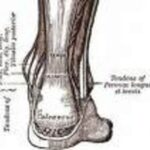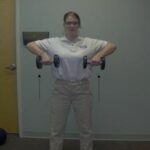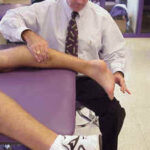How to Exercise with Tendonitis – After dealing with Tendonitis for over ten years, I’m going to tell you- It’s not easy to deal with, and you can really damage yourself further if proper precautions aren’t taken to help prevent further injury. As with any exercise routine and medical condition, it’s always best to consult with your physician before beginning any exercise program or routine.
Tendonitis is caused by an inflammation of a tendon. Tendons are the bands of strong tissue which connect your muscles to bone. The inflammation which causes tendonitis is usually caused by over-using and straining muscles and tendons in certain areas. Tendonitis tends to occur in the shoulders, wrists, heels, knees, and shins. Calcium deposits and other forms of disease can also cause tendonitis- this is why it’s important to discuss suspected tendonitis with your physician before attempting any sort of self-care or diagnosing yourself.
Tendonitis can cause severe pain, limit your mobility, and if left untreated long enough, can cause your tendons to become weak, which will cause them to be more likely to tear. If your tendons become damaged severely enough, then surgery can end up becoming necessary to fix the damaged tendon.
Once your physician gives you the go-ahead to return to exercising or physical activity using the damaged muscles and tendons, it’s important to make sure to ease back into a work-out routine, and not push yourself too hard. Do not work through pain- this can cause further damage and prevent proper healing of your injury. Do not continue an activity that has already triggered the tendonitis.
It’s very important to try to remember and make an effort to change up your work-out “routine,” so that you aren’t repeatedly using the same muscles each time. Tendonitis tends to be caused by repeated overuse of the same muscles. To prevent recurrence of tendonitis or new incidence of it, it’s important to make sure you are thorough about warming up before and cooling down after exercising. Stretching all muscles before and even after your work-out can also help in cases of tendonitis.
If you are having an active flare-up of tendonitis, it’s important to rest your muscles and not do anything that will aggravate the inflammation. A splint, brace or other padding can also help to mobilize your injured muscle, to help prevent further damage and help promote rest and healing.
Ice packs applied to the damaged area is also important, this will help lessen the swelling and keep the inflammation from going further out of control. If caught quickly enough, this can cause the swelling and inflammation to become minimal, and will allow you to be able to get back to normal activities much sooner.
If your pain is extremely bad, swelling and inflammation are not lessened by ice packs, splinting or other general resting precautions you can discuss with your doctor whether it would be effective to take non-steroidal anti-inflammatory medications. (These would include Ibuprofen, Motrin, etc.) These medications are often used in conjunction with ice packs, rest and splints or other bracing.
If you are prone to recurring bouts of tendonitis, then you might discuss the option of cortisone injections with your physician. Cortisone can be very effective in relieving inflammation, but must be given as injections rather than taken orally. But Cortisone injections are not effective on every type of tendonitis, and some people are allergic to Cortisone. It’s very important to discuss this with your physician, and with his/her help, weigh the pros and cons of Cortisone injections as treatment.
I have to wear wrist braces every time I type, crochet, sew or do any other repetitive motion for any length of time. This helps prevent such frequent incidences of tendonitis, and helps relieve pain and swelling when I am having active occurrences of tendonitis. Also, taking Ibuprofen has really helped me to keep the inflammation down to a minimum.
The bottom line to exercising with tendonitis is- don’t push yourself too hard, give your body ample time to heal, and follow the advice of your physician before embarking on any new activities or returning to normal work-outs.





